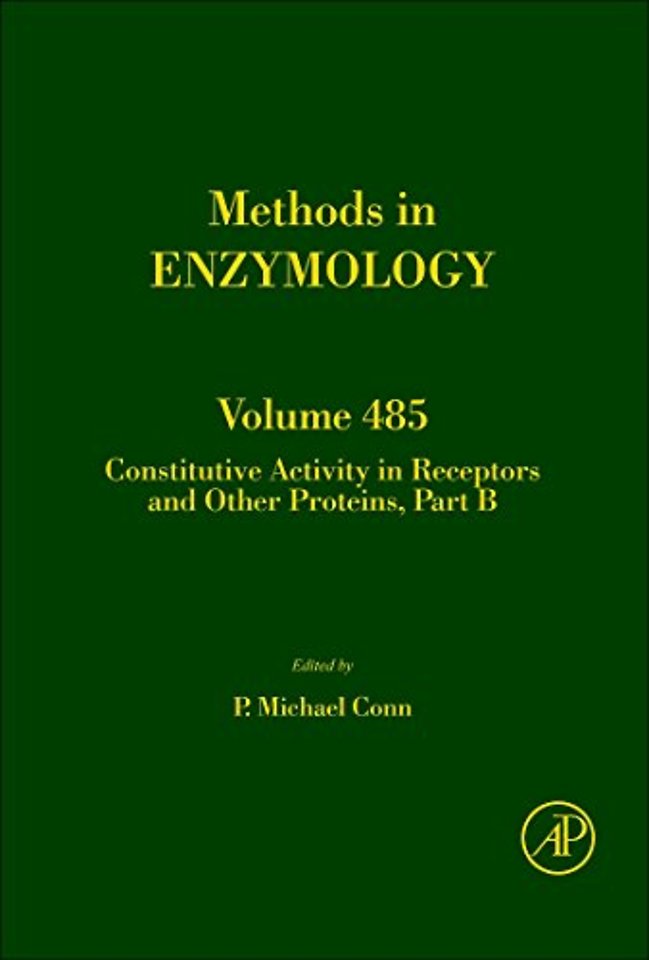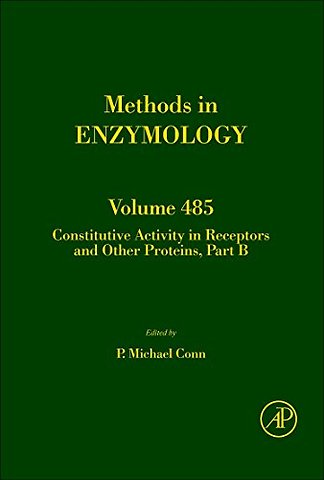<ol> <ol> <li>Identification and characterization of Steroidogenic Factor-1 inverse agonists. </li> <p>Mabrouka Doghman, Franck Madoux, Peter Hodder, and Enzo Lalli</p> <p> <li>Assessment of inverse agonism for the angiotensin II type 1 receptor</li> <p>Hiroshi Akazawa, Noritaka Yasuda, Shin-ichiro Miura, Issei Komuro</p> <p> <li>Measurement of inverse agonism in BARs</li> <p>Carlos Alberto Taira</p> <p> <li>Inverse agonism of antidepressants: in vitro and in vivo studies</li> <p>Joel Bockaert</p> <p> <li>Differential inverse agonism at the human muscarinic M<SUB>3</SUB> receptor</li> <p>Paola Casarosa</p> <p> <li>Ghrelin Receptor: High Constitutive Activity and Methods for Developing Inverse Agonists.</li> <p>Constance Chollet</p> <p> <li>Constitutive activity and inverse agonism at the α1a and α1b adrenergic receptor subtypes.</li> <p>Susanna. Cotecchia</p> <p> <li>Measurement of inverse agonism of the cannabinoid receptor</li> <p>Tung Fong</p> <p> <li>Constitutively Active Thyrotropin (TSH) and Thyrotropin-Releasing Hormone (TRH) Receptors and Their Inverse Agonists</li> <p>Marvin C. Gershengorn</p> <p> <li>Inverse retinoid agonists and neutral antagonists</li> <p>Hinrich Gronemeyer</p> <p> <li>γ-Aminobutyric Acid Type A (GABA<SUB>A</SUB>) Receptor Subtype Inverse Agonists as Therapeutic Agents in Cognition </li> <p>Gabriella Guerrini and Ciciani Giovanna</p> <p> <li>Assays for inverse agonists in the visual system.</li> <p>Masahiro Kono</p> <p> <li>Receptor-driven identification of novel human A3 adenosine receptor antagonists as potential therapeutic agents</li> <p>Silvia Paoletta, Stephanie Federico, Giampiero Spalluto and Stefano Moro</p> <p> <li>Inverse agonists of steroidogenic factor SF-1</li> <p>Fabrice Piu and Andria L. Del Tredici</p> <p> <li>Methods to Measure G Protein Coupled Receptor Activity for the Identification of Inverse Agonists</li> <p>Gabriel Barreda-Gómez, M.Teresa Giralt and Rafael Rodríguez-Puertas</p> <p>Section II-- Novel Strategies and Techniques for Constitutive Activity and Inverse Agonism</p> <p> <li>Use of Pharmacoperones to Reveal GPCR Structural Components Associated with Receptor Activation and Trafficking</li> <p>Jo Ann Janovick and P. Michael Conn</p> <p> <li>Application of large-scale transiently transfected cells to functional assays of ion channels and other proteins.</li> <p>Jun Chen, Sujatha Gopalakrishnan, Marc R Lake, and Bruce R Bianchi</p> <p> <li>Quantification of RNA Editing of the Serotonin 2C Receptor (5-HT2CR) Ex Vivo </li> <p>Maria Fe Lanfranco, Noelle C. Anastasio, Patricia K. Seitz, and Kathryn A. Cunningham </p> <p> <li>Strategies for isolating constitutively-active and dominant-negative pheromone receptor mutants in yeast. </li> <p>Mercedes Dosil and James B. Konopka</p> <p> <li>Development of a GPR23 Cell-based β-Lactamase Reporter Assay</li> <p>Paul H. Lee and Bonnie J. Hanson</p> <p> <li>Computational Modeling of Constitutively Active Mutants of GPCRs: C5a Receptor. </li> <p>Gregory V. Nikiforovich and Thomas J. Baranski</p> <p> <li>TSH receptor monoclonal antibodies with agonist, antagonist and inverse agonist activities </li> <p>Jane Sanders, Ricardo Núñez Miguel, Jadwiga Furmaniak, Bernard Rees Smith</p> <p> <li>Current standards, variations and pitfalls for the determination of constitutive TSHR activity in vitro</li> <p>Sandra Mueller, Holger Jaeschke, Ralf Paschke </p> <p> <li>Towards the Rational Design of Constitutively Active KCa3.1 Mutant Channels </li> <p>Line Garneau, Hélène Klein, Lucie Parent, Rémy Sauvé</p> <p> <li>Fusion proteins as model systems for the analysis of constitutive GPCR activity</li> <p>Erich H. Schneider, Roland Seifert </p> <p> <li>Screening for Novel Constitutively Active CXCR2 Mutants and Their Cellular Effects </li> <p>Giljun Park, Tom Masi, Chang K. Choi, Heejung Kim, Jeffrey M. Becker, and Tim E. Sparer </p> <p> <li>A method for parallel solid-phase synthesis of iodinated analogues of the cannabinoid receptor type I (CB1) inverse agonist rimonabant </li> <p>Alan C. Spivey and Chih-Chung Tseng</p> <p> <li>Coexpression systems as models for the analysis of constitutive GPCR activity</li> <p>Roland Seifert and Erich H. Schneider</p> <p> <li>Modelling and simulation of inverse agonism dynamics </li> <p>Lloyd J. Bridge </p> <p> <li>Design and Use of Constitutively Active STAT5 Constructs </li> <p>Michael A. Farrar</p> <p> <li>In vitro and in vivo assays of protein kinase CK2 activity</li> </ol> <p>Renaud Prudent, Céline F. Sautel, Virginie Moucadel, Béatrice Laudet, Odilhe Filhol, and Claude Cochet</p></ol>

